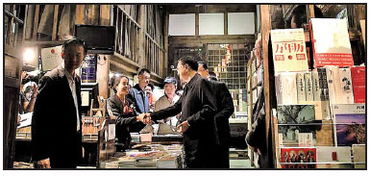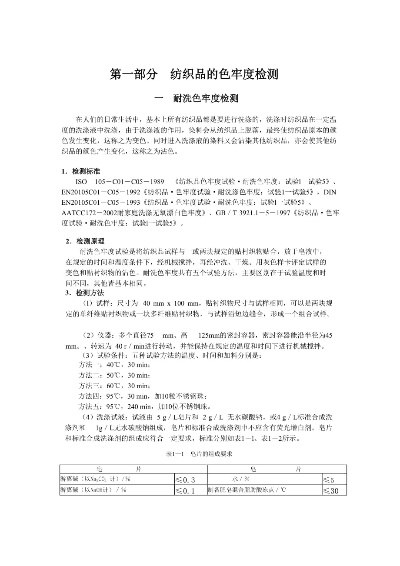Understanding the Key Inspection Areas in Textiles
In the field of textiles, key inspection areas are crucial for ensuring product quality and consumer safety. These areas include materials used in the production process, such as yarn and fabric, as well as the finished products themselves. Additionally, inspections should focus on the dyeing process, which can affect the color and texture of the fabric. Inspections must also cover the quality control measures implemented during the manufacturing process, including proper storage and handling of raw materials and finished products. Finally, it is essential to evaluate the environmental impact of the textile industry, including the use of harmful chemicals and the potential for pollution from waste disposal. By understanding these key inspection areas, companies can ensure that their products meet high standards of quality and safety, while also being mindful of their impact on the environment.
Introduction: In today's world, textiles play a crucial role in our daily lives. They are used for clothing, bedding, upholstery, and more. However, to ensure that these products meet the necessary standards and meet consumer expectations, it is essential to perform thorough inspections on them. This article will discuss the key inspection areas in textiles, including their importance, methods of inspection, and some practical examples.
Key Inspection Areas in Textiles:
-
Material Inspection: The first step in inspecting textiles is to check the material used. This includes determining the type of fibers, such as cotton, polyester, or wool, and checking for any defects in the material. For example, if a textile contains too many holes or frayed edges, it may not be durable or comfortable to wear.
-
Color Testing: Color testing is an important aspect of textile inspection. It involves comparing the actual color of the product with the standard color chart to ensure that it matches the desired shade. If there are any discrepancies, the product may need to be re-processed or re-colored.

-
Pattern and Design Inspection: This involves examining the pattern and design of the textile to ensure that it meets the required specifications. For example, if a shirt has a specific design or pattern, it needs to be accurate and consistent throughout the entire garment.
-
Size Inspection: Size inspection is critical for ensuring that the textile fits properly and comfortably. It involves measuring the size of the product and comparing it to the standard size chart. If the product is too small or too large, it may not fit properly or be uncomfortable to wear.
-
Quality Control (QC): Quality control is the process of ensuring that the finished product meets the necessary standards. This involves inspecting the product for any defects or flaws that may affect its functionality or appearance. QC checks can include visual inspections, tear tests, and other methods to determine the quality of the product.
Methods of Inspection: There are several methods of inspection used in textiles, including visual inspection, laboratory testing, and mechanical testing.
-
Visual Inspection: Visual inspection is the most common method of inspection used in textiles. It involves examining the product under a microscope or using a magnifying glass to identify any defects or flaws. This method is quick and easy to use, but it may not detect all types of defects.
-
Laboratory Testing: Laboratory testing involves sending samples of the product to a laboratory for analysis. This can help identify any chemical or physical defects that may affect the product's quality or performance. For example, if a textile contains too much dye or fabric softener, it may not be safe for use.
-
Mechanical Testing: Mechanical testing involves subjecting the product to stresses and strains to determine its strength and durability. This can include tests such as tensile testing, compression testing, and bending testing. These tests help identify any weaknesses or flaws in the product's structure that may affect its performance or safety.
Practical Example: Let's take a look at a real-world example involving a textile company that produces bed linens. The company was faced with a problem where some of their bed linens were coming out of the machine with holes in them. To solve this problem, they decided to conduct a thorough inspection of the production process. The company hired a third-party testing laboratory to analyze the materials used in the production process and the quality control measures in place. The lab tested the materials for any defects or flaws and conducted various tests to determine the strength and durability of the products. Based on the results, the company made several changes to the production process, such as improving the quality control measures and using a different type of fiber for some of the products. As a result, the company was able to reduce the number of defective products and improve customer satisfaction.
Conclusion: Textile inspection is an essential process that ensures that the products meet the necessary standards and meet consumer expectations. By conducting thorough inspections on the material, color, pattern, size, and quality control of textiles, companies can identify any defects or flaws that may affect their products' performance or safety. In addition, regular inspections can help identify potential issues early on and prevent them from becoming major problems down the line. Therefore, investing in proper inspection procedures is crucial for ensuring the long-term success of any textile manufacturing business.
在纺织品的质量控制过程中,检测部位的选择至关重要,本文将详细阐述纺织品的检测部位及其重要性,并通过案例分析来说明检测部位的具体应用。
纺织品的检测部位
外观检测
外观检测是纺织品质量的第一道关卡,主要针对纺织品表面的质量、颜色、光泽等进行检测,常见的检测部位包括面料表面、质地、纹理等。
纤维检测
纤维检测是针对纺织纤维本身的特性进行检测,包括纤维的种类、长度、直径、取向度等,纤维检测对于确保纺织品使用的纤维材料符合标准至关重要。
化学成分检测

化学成分检测是对纺织品的化学成分进行测定,包括纤维中的化学元素含量、染料成分等,化学成分检测可以确保纺织品在使用过程中不含有害物质,符合环保要求。
机械性能检测
机械性能检测是对纺织品的机械强度、耐磨性、抗皱性等进行测试,机械性能检测可以确保纺织品在使用过程中具有良好的性能表现。
微生物检测
微生物检测是对纺织品中是否存在微生物污染进行检测,包括细菌、真菌等,微生物检测可以确保纺织品在使用过程中符合卫生标准,保障消费者的健康。
案例说明
以纺织品检测为例,我们可以使用表格详细说明各个检测部位的应用情况,以下是具体的案例说明:
面料检测
面料外观检测:通过观察面料表面颜色、光泽、纹理等,来判断面料的质量和性能,某品牌的面料经过外观检测后,发现其面料颜色鲜艳、光泽度高,纹理清晰,符合高质量的面料标准。
纤维检测:对面料中的纤维进行详细检测,包括纤维的种类、长度、直径等,通过纤维检测,可以确保面料使用的纤维材料符合标准,满足消费者的需求。
化学成分检测:对面料中的化学成分进行测定,确保面料在使用过程中不含有害物质,符合环保要求,某品牌的面料使用了环保染料,经过化学成分检测后,确认其化学成分符合环保标准。
机械性能检测:对面料进行机械性能测试,包括拉伸强度、耐磨性、抗皱性等,通过机械性能测试,可以确保面料在使用过程中具有良好的性能表现,该品牌的面料经过机械性能测试后,各项指标均符合要求,可以满足消费者的使用需求。
纺织品微生物检测
纺织品微生物检测:通过对纺织品进行微生物培养和检测,来判断纺织品是否存在微生物污染,某品牌在生产过程中严格遵守卫生标准,对纺织品进行了微生物检测,确认其符合卫生标准,保障消费者的健康。
纺织品的检测部位是确保纺织品质量的重要环节,在纺织品质量控制过程中,需要从外观检测、纤维检测、化学成分检测、机械性能检测和微生物检测等多个方面进行全面检查,通过正确的检测部位和方法,可以确保纺织品的品质符合标准,保障消费者的健康和安全。
Articles related to the knowledge points of this article:
Europes Latest Textile Recall Case Study
The Future of Textile Industry:A Transformational Journey
The Cloudy Fabric:An Introduction to Yufu Textile Testing Company
The Art of Textile Design A Visual Journey through Graphic Patterns



